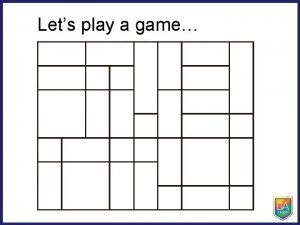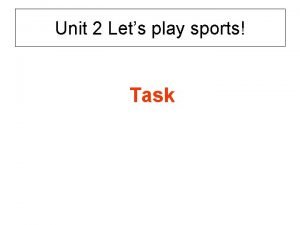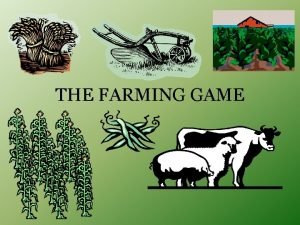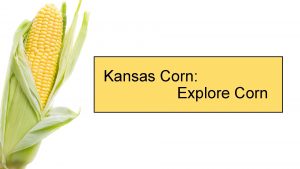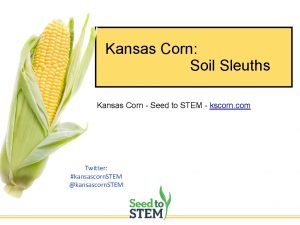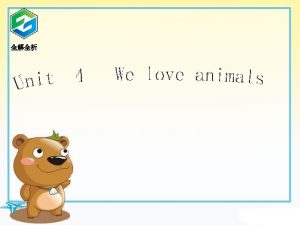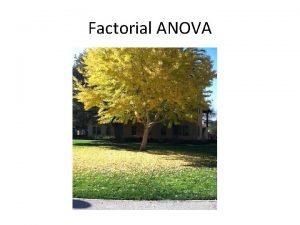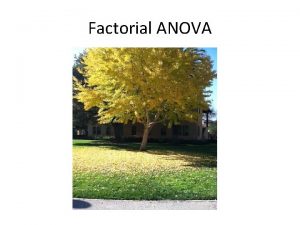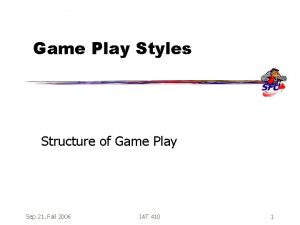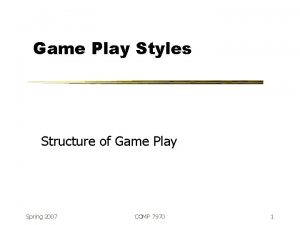Kansas Corn Explore Corn Lets Play A Game










































- Slides: 42

Kansas Corn: Explore Corn

Let’s Play A Game! Introduce yourselves to your team… 5 questions

Question 1 Name 2 of the 4 basic types of corn…

Question 1

Question 2 How long has corn been around?

Question 2 Answer: 7, 000 years from Central Mexico… or sweet corn developed in 1700 s

Question 3 How many kernels are on an average ear of corn?

Question 3 Answer: 600 to 800 kernels

Question 4 About how many corn plants can grow on an acre of land?

Question 4 Answer: 22, 000 to 35, 000 plants

Question 5 The majority of grown corn is used for what purpose?

Question 5 Answer: Livestock feed

Question 6 – JOKE! How much does a pirate pay for an ear of corn?

Question 6 – JOKE! Answer: A buccaneer

Explore Corn Breakdown • Corn background and uses • Stages of life of a corn plant • Leaf Collar Method - determine SOME stages of life just by looking at plant • Dissect corn plant!

Explore Corn • Turn to “Explore Corn” article in your binder (T 7). • Introduce yourself to the people at your table. • Read article with your group. • Using whiteboard… or paper… at table, draw 5 pictures that represent 5 important facts from the article. • Time: 10 minutes

Explore Corn • Corn Staging and Leaf Collar Exploration

Corn Staging & Leaf Collar (Websites in your packet and student sheet)

Stages of Corn Life

Corn Staging & Leaf Collar (Turn to S 2)

Corn Staging & Leaf Collar Protective outer coating of seed

Corn Staging & Leaf Collar Protective outer coating of seed Moves downward from seed… helps with water uptake

Corn Staging & Leaf Collar Protective outer coating of seed Pushes up out of seed… future leaf Moves downward from seed… helps with water uptake

Corn Staging & Leaf Collar Protective outer coating of seed Pushes up out of seed… future leaf Moves downward from seed… helps with water uptake Water uptake system

Corn Staging & Leaf Collar Protective outer coating of seed Pushes up out of seed… future leaf Moves downward from seed… helps with water uptake Connects coleoptile & seed… helps lift coleoptile to surface Water uptake system

VE – Vegetative Emergence • Coleoptile breaks the surface • Can take up to 2 weeks (5 days under ideal conditions)

V 1 – 1 st collar showing • Difficult to distinguish from VE… collar around leaf distinguishes

V 3 – 3 rd collar showing • Much of growth still below surface • 3 collars • All of the leaves and ear shoots (potential ears) plant will ever produce form inside stalk from V 3 to V 5!

V 4 – V 9 • V 7 -V 8: Number of kernel rows is being determined by plant • V 9: Tassel begins to develop…

V 10 – V 15 • V 10: New leaves produced about every 2 -3 days • V 15: New leaves produces about every 1 -2 days… tip of tassel might be visible

V 16 – V 18 • V 18: Silks from ear location begin elongating • Silking about 1 week away. . . Then corn cob making begins!

VT - Tasseling • VT: Tassel fully visible… time for reproduction! • Plant now very vulnerable to hail damage! We need fertilization with tassel and silks to happen…

R 1 - Silking • Silk fully visible outside of husk • Silks catch falling pollen…transfer pollen down ovule for fertilization. • All silks usually fertilized in about 2 -3 days

R 2 – Blistering (10 to 14 days after silking) • Kernels are white on outside and resemble a… blister! • Cob is close to full size • Kernels begin to accumulate matter… kernels about 85% moisture

R 3 – Milk (18 to 22 days after silking) • Kernels are turning yellow • Inner fluid now milky white • Silks becoming dry • Sweet corn picked in this stage

R 4 – Dough (24 to 28 days after silking) • Inner milky white fluid now a “doughy” consistency • Kernels at edge of cob begin to “dent” toward end of stage

R 5 (35 to 42 days after silking) • Kernels are dented. • Drying occurs from top of cob to bottom.

R 6 – Physiological Maturity (55 to 65 days after silking) • Maximum dry weight.

Ear of Corn Exploration – Page S 5 • Work through student worksheet • Time: 10 minutes

Corn Structure Review Tassel Kernel Shank Husk Stalk Silks Ear Root

Corn Plant Dissection – Page T 16, S 7, S 8) • Work through student worksheet • Time: 20 minutes

Brought to you by: Connect with us: #kansascorn. STEM kscorn. com
 Lets play a game
Lets play a game Kansas kansas state fight
Kansas kansas state fight Lets play bridge
Lets play bridge Lets play sports
Lets play sports Let's play jeopardy
Let's play jeopardy Let's play begin
Let's play begin Let's play jeopardy
Let's play jeopardy Lets play
Lets play Chemistry jeopardy questions
Chemistry jeopardy questions Stock market game 1920s
Stock market game 1920s Play by play
Play by play Hamlet
Hamlet I've got a friend we like to play we play together
I've got a friend we like to play we play together Play random play basketball
Play random play basketball Steal the pile card game
Steal the pile card game Play out game
Play out game Missionaries and cannibals game
Missionaries and cannibals game 1. what game do the members of the joy luck club play?
1. what game do the members of the joy luck club play? How to play any mental game
How to play any mental game Fictitious play
Fictitious play Liar game game theory
Liar game game theory Farming game rules
Farming game rules Liar game game theory
Liar game game theory A formal approach to game design and game research
A formal approach to game design and game research Game lab game theory
Game lab game theory Game theory pirate game
Game theory pirate game Marius explore la cellule
Marius explore la cellule Why did europeans begin to explore
Why did europeans begin to explore What motivates people to explore
What motivates people to explore What countries did henry hudson sail for
What countries did henry hudson sail for Iexplore imperial
Iexplore imperial College physics: explore and apply answers
College physics: explore and apply answers Lesson 1 europeans explore overseas
Lesson 1 europeans explore overseas Why did europeans begin to explore
Why did europeans begin to explore Bnf explore food
Bnf explore food Explore your future
Explore your future Are kangaroos dangerous
Are kangaroos dangerous Bekah tinter
Bekah tinter What country did henry hudson explore for
What country did henry hudson explore for Fcat explorer
Fcat explorer Qad explore
Qad explore Tom crean antarctic explorer
Tom crean antarctic explorer Lesson 1 europeans explore overseas
Lesson 1 europeans explore overseas
